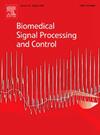基于改进的优化特征选择和关注CNN-BILSTM技术的高级心电分类
IF 4.9
2区 医学
Q1 ENGINEERING, BIOMEDICAL
引用次数: 0
摘要
心电信号的准确预测和分类对于有效的心脏病诊断至关重要,因为它们在早期发现、个性化治疗和持续的疾病管理中发挥着重要作用。精确的分类允许早期识别心脏异常,使及时干预能够显著改善患者预后并预防严重并发症。传统的方法经常与心电信号数据的动态特性作斗争,导致识别异常的性能不理想。为了克服这些缺点,本研究提出了一种新的心电信号分类方法。提出的框架从心电信号的归一化开始,以减少噪声并保持整个数据集的均匀性。在归一化之后,使用改进的小波变换(IWT)进行特征提取,通过将心电信号转换为不同的频率分量,增强了捕获复杂细节和时间变化的能力。为了进一步细化特征集,采用改进的优化鸟群算法(IOBSA),在降维的同时有效地识别出最相关和最具判别性的特征。最后,采用注意卷积神经网络(CNN)结合双向长短期记忆(BiLSTM)网络对所选特征进行分类。注意力CNN增强了模型关注心电信号关键区域的能力,而BiLSTM组件捕获数据中过去和未来的依赖关系,提高了整体分类性能。这个集成框架使用Python软件执行,结果显示与传统方法相比,分类精度有了显著提高。本文章由计算机程序翻译,如有差异,请以英文原文为准。
Advanced ECG classification with improved optimized feature selection and attention CNN-BILSTM technique
Accurate prediction and classification of ECG signals are crucial for effective cardiac disease diagnosis due to their role in early detection, personalized treatment, and ongoing disease management. Precise classification allows for the early identification of cardiac abnormalities, enabling timely interventions that significantly improve patient outcomes and prevent severe complications. Traditional methods often struggle with the dynamic nature of ECG signal data, leading to suboptimal performance in identifying abnormalities. To mitigate these shortcomings, this research introduces a novel approach for ECG signal classification. The proposed framework begins with normalization of the ECG signals to reduce noise and maintain uniformity throughout the dataset. Following normalization, feature extraction is performed using an Improved Wavelet Transform (IWT), offering enhanced capabilities for capturing the intricate details and temporal changes in ECG signals by transforming them into different frequency components. To further refine the feature set, the Improved Optimized Bird Swarm Algorithm (IOBSA) is employed, which efficiently identifies the most relevant and discriminative features while reducing dimensionality. Finally the selected features are processed by an Attention Convolutional Neural Network (CNN) combined with Bidirectional Long Short-Term Memory (BiLSTM) networks for classification. The Attention CNN enhances the model’s ability in focussing on critical regions of ECG signals, while the BiLSTM component captures both past and future dependencies in data, improving the overall classification performance. This integrated framework is executed using Python software, and results shows significant improvements in classification accuracy compared to conventional approaches.
求助全文
通过发布文献求助,成功后即可免费获取论文全文。
去求助
来源期刊

Biomedical Signal Processing and Control
工程技术-工程:生物医学
CiteScore
9.80
自引率
13.70%
发文量
822
审稿时长
4 months
期刊介绍:
Biomedical Signal Processing and Control aims to provide a cross-disciplinary international forum for the interchange of information on research in the measurement and analysis of signals and images in clinical medicine and the biological sciences. Emphasis is placed on contributions dealing with the practical, applications-led research on the use of methods and devices in clinical diagnosis, patient monitoring and management.
Biomedical Signal Processing and Control reflects the main areas in which these methods are being used and developed at the interface of both engineering and clinical science. The scope of the journal is defined to include relevant review papers, technical notes, short communications and letters. Tutorial papers and special issues will also be published.
 求助内容:
求助内容: 应助结果提醒方式:
应助结果提醒方式:


